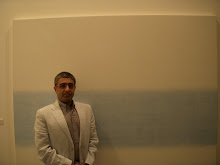Subscribe to:
Post Comments (Atom)
skip to main |
skip to sidebar


STRATEGY, TACTICS, RISK, KNOWLEDGE, APPLYING FOR BUSINESS, INVESTING, WEALTH MGMT, ART, CARS...ETC
Facebook Badge
Facebook Badge
FERRARI 458 ITALIA's Live Stream Box
FERRARI 458 ITALIA on Facebook
Facebook Badge

Facebook Badge
Followers
Blog Archive
-
▼
2009
(25)
-
▼
May
(13)
- Super Spike Two
- Trading Volume Separates Bull Markets from Bear Ra...
- Emaar Properties to maintain focus on business seg...
- Global Economics on Tilt – How to Protect Your Ass...
- BLOG ALL ABOUT
- Sunday Times Rich List 2009
- 12 Reasons To Be (Economically) Optimistic
- Economists React: ‘Obvious Glimmers of Hope’ in GD...
- JPMorgan: Upbeat on the Economy May 1st, 2009
- Buffett Dismisses Stress Tests, Praises Wells Fargo
- Steven A Cohen's collection goes on show at Sotheby's
- Wine Adds Five Years to Life, More Than Beer, Dutc...
- Downgrading the USA
-
▼
May
(13)
GB's Expertise.

- GB BAJAJ
- Bombay, Dubai
- WEALTH MGMT: Advising clients (UHNI’s/HNI’s ) by designing strategies for asset allocation suiting their respective risk profiles with a goal oriented approach. Effective in gaining an in-depth understanding of client’s needs and advising on a diverse range of wealth management solutions .Become the trusted advisor to clients, providing guidance across the full range of wealth management products, and a consistent, credible and accessible point of contact.



No comments:
Post a Comment